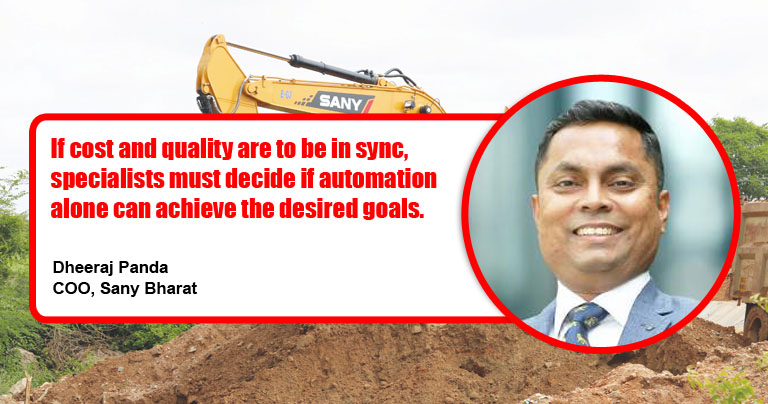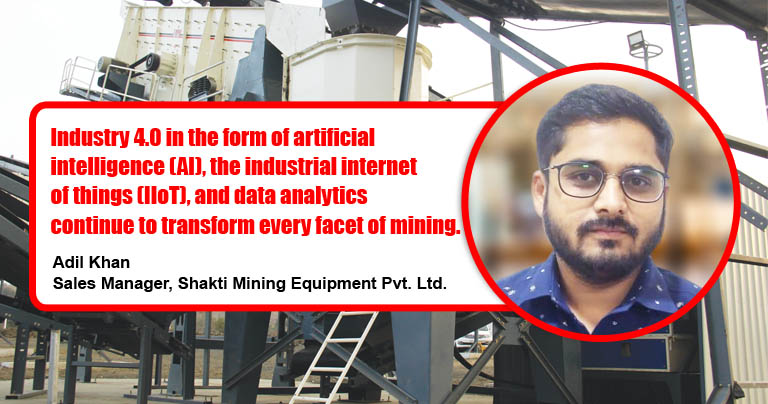What’s next for Indian Mining?
By Edit Team | August 11, 2020 9:08 am SHARE

From energy security to self reliance to reforms and embracing challenges faced by the coronavirus pandemic; here’s how Indian mining sector has undergone a massive transformation.
Aiming for energy security with coal mining
India is stepping on the gas to lay a strong foundation with commercial-mine auction in order to build for energy security while providing large-scale employment and huge opportunities for investment in the coal sector. In a nutshell, India is marking a fundamental or paradigm shift to unleash the coal sector as we reorient our approach from focusing on revenue maximization to making maximum coal available. The move will not only help address India’s coal production needs, but also attract investment to add to our GDP while saving precious foreign exchange.
This is an epoch-making development for several reasons. For one, global coal mining firms, which were so far forbidden from mining coal in India, can now invest and introduce their best practices. Secondly, Indian industry can invest in a commodity business where domestic supply falls short of the demand, opening up an opportunity to substitute 135 MT coal imports.
The ensuing competition will enhance India’s energy security paving the way for local and foreign mining majors and non-mining ones to participate in the coal sector. The success of this will hinge on the size of mines being offered, their reserve price, and the norms pertaining to the auction of mines, this will no doubt have a knock-on effect on sectors that use coal, like the steel, power and aluminum.
Move towards Aatmanirbharta
The coal sector reforms are not just about investments and improving coal production. They have the innate potential to usher in immense job creation opportunities and boost the government’s ‘Make in India’ program, since coal mining operations require large machines and manpower. Besides, leading to the induction of new technology and competition in the sector, which will increase self-reliance, remove operational efficiencies and usher in an era of greater prosperity.
The government has introduced a more equitable system of sharing of revenues, moving away from fixed rates to an ad-valorem system. So when the prices go up, the miner shares more with the government, and consequently, the economies of coal bearing states like Jharkhand, Chhattisgarh, Madhya Pradesh, Maharashtra and Odisha will also prosper.
Reforms now called for
In my opinion irrespective of Covid-19, reforms should be directed at the following key objectives:
• Re-engineering the process of granting permissions and licenses to reduce time-to-value and risk to mine developer.
• Reduce cost and enhance supply by unlocking reserves for faster exploration and commercialization by promoting large-scale mechanized mining through allocation of larger blocks or implementing digital technologies.
• Address evacuation challenges through heavy mechanization and encourage development of organizations.
• Rationalize taxes and duties to reduce costs and ultimately greater production, value-addition as well as exports, which in turn can increase gross revenue collections.
• Land acquisition, environmental clearance, rehabilitation and resettlement laws must be re-imagined.
• Address different facets of mineral allocation and administration so that we are able to ultimately use our resources to improve national competitiveness.
Issue of pragmatic pricing of minerals as there are no benchmark prices available for a host of minerals that are traded in the country. There is no mechanism to value trace-minerals being excavated and sold along with the prime mineral of a block. Another near-horizon issue would be to resolve litigations that are impeding capacity reallocation and expansion.
Covid era
The immediate challenge is stopping the spread of Covid-19 and ensuring staff are safe and healthy while focusing on productivity. Initially the impact is on day-to-day operations and ways of working with measures such as social distancing and maintaining operations with minimal staff. We may see direct mine site closures due to the virus or lack of personnel. A significant percentage of mine sites are in remote locations, so closure is not imminent unless of course there is a case on the mine site.
Mining sector to go hi-tech
We are finally beginning to see big changes permeating the age-old industry of mining. Shaking the image of the dirt covered miner in the dark, to new-age digital feats of technology digital technologies such as artificial intelligence, automation, VR and AR are transforming the mining industry at an accelerating pace achieving major improvements in performance, safety, costs, and sustainability above all exceeding customer expectations and global sustainability initiatives. This will deliver a dynamic and transformative mine environment.
These are solutions to monitor and review the mining performance and data on mobiles, getting alerts and other information without having to be on site or in the control room. Or remote condition monitoring service, which will permit remote experts to monitor and prevent failure before it occurs. Drones will take aerial pictures packed with data to the pixel, sensors monitor the slightest degree of change in airflows, trucks are becoming driverless, equipment is maintained remotely – all of these technologies rapidly change the mining industry. These new technologies will no doubt remove a lot of the uncertainty and risk from mining each and every day.
Contributed by:
Pranav Koshal,
Founder,
Bulls-i Consulting
Cookie Consent
We use cookies to personalize your experience. By continuing to visit this website you agree to our Terms & Conditions, Privacy Policy and Cookie Policy.




















